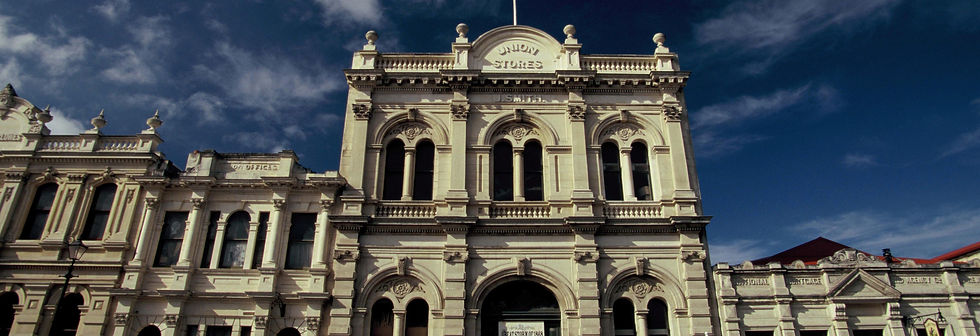



Culture & heritage
For many hundreds of years, the Waitaki River and Valley was a seasonal hunting and fishing ground for Māori. The limestone caves and overhangs gave shelter on cold nights and made a canvas for charcoal and red ochre drawings, still preserved at the Takiroa and Maerewhenua sites near Duntroon. They provide an early record of the first travellers along the shores of the Waitaki River. The illustrations portray bird, animal life and human figures and record observations of European settlers by the indigenous people.
When the first European settlers arrived in the Waitaki district, there were truly no trees to build shelter and houses from. As an alternative they turned to a material that was available in abundance - limestone. One hundred and fifty years on, these buildings still stand and nowhere is that more evident than in Ōamaru’s Victorian Precinct of Harbour and Tyne Streets. Ōamaru now retains the most complete collection of Victorian era buildings in the Southern Hemisphere. Check out this report by Heritage New Zealand / Pouhere Taonga on the Ōamaru Historic Area!
30 years ago the Ōamaru Whitestone Civic Trust began the long process of restoring these grain stores and offices built in the 1800s and they have been re-purposed into workshops and retail spaces, while retaining some large spaces for wool storage, a whisky shop, a large event space as well as ‘Whitestone City’, where activities, displays, and costumed guides provide a glimpse of what the town would have been like in Victorian times. Today the Victorian Precinct is a flourishing community of artisans, artists and craftspeople. Keen to learn more? Embark on a 90-minute easy-paced walk around the Historic Precinct and be immersed in Oamaru's rich heritage, culture and geology with a knowledgeable guide. Check out the Oamaru Heritage Walking Tours.
Check out Heritage New Zealand Pouhere Taonga, the leading national historic heritage agency, for more information.








